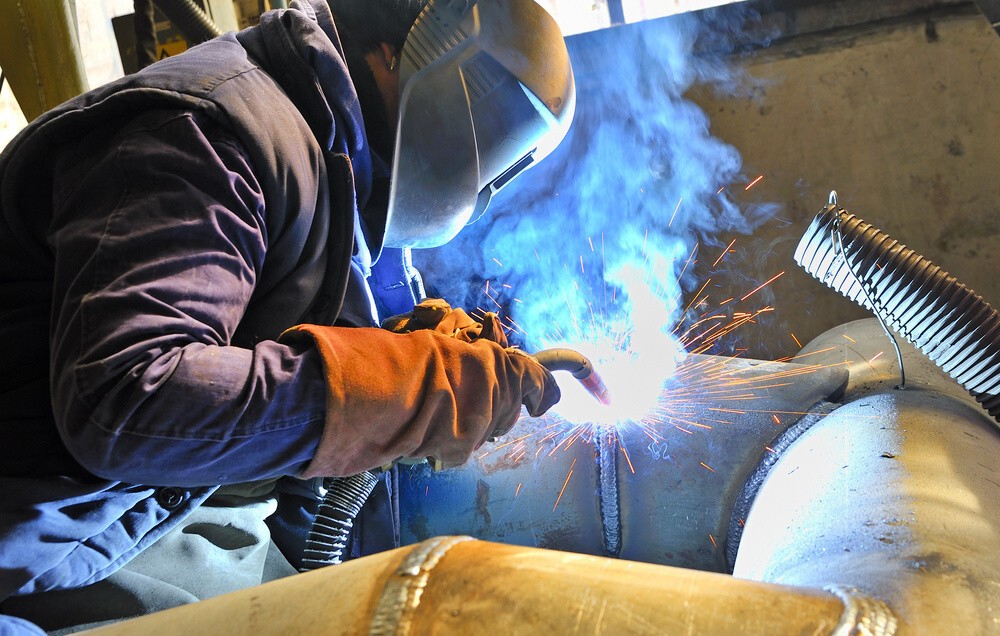When it comes to welding, you may have heard that there are different types of welding that uses specific method and technology. The most commonly used form of welding all around the world are plasma welding and tig welding.
We often get confused between both welding processes. Therefore, in this article, we are going to provide you with a comprehensive detail about both forms of welding, and after reading it, you will be clearly able to differentiate between them.
Table of Contents
Plasma Welding
Plasma welding is a form of welding technique in which it joints the metal using electricity. An electric arc is generated between an electrode and the metal pieces that need to be welded.
An electric arc generates the heat; as a result, it melts down the metal, and when it cools down, it weld down the metal pieces.

Required equipment for plasma welding
Generally, you need to have the following tool or equipment to use the plasma welding technique to join metals.
Power source: In order to ensure quality and efficiency, you need to provide interrupted constant power for plasma welding. Voltage and current should be as per the requirement.
Plasma welding torch: Transferred or non-transferred arc types are used in plasma welding and are generally water-cooled to increase the electrode’s lifespan and to protect the nozzle from the heat generated during the welding process.
HF generator: High-frequency generator is required in addition to the current limiting resistors to be used for an arc ignition.
Control panel or equipment: To ensure that everything runs smoothly, control equipment is required to regulate the settings and parameters as per the requirement.
Applications
Plasma welding is being widely used for many different purposes. Some of the main industries and trades include marine engineering to the aerospace industry.
From large scale to small scale, plasma cutting is also used for welding small instruments and electronics.
There are several advantages of using this technique of welding. Some of which are:
- Plasma welding gives you better control over other types of welding processes, and you can use it in all positions.
- From small to large workpieces, plasma welding can be used to join any type of metal.
- It consumes less power as compared to other types of welding processes.
- High speed, accuracy, and precision
- Longer arc lengths.
- Plasma welding equipment is a little bit costly
- It requires technical knowledge and expertise to operate
- The welding process is a bit louder
Tig Welding
Tungsten Inert Gas (TIG) welding is a technique of welding process that uses a non-consumable tungsten electrode.
It works the same way as far as the use of electricity is concerned, and as mentioned earlier, the tig welding uses a non-consumable electrode to create an arc with the metal being welded.
The arc in this method is protected by the flow of shielding gas.
The main component of tig welding includes power supply, welding torch, electrode, and shielding gas tank.
Applications
Tig welding is another popular form of welding process being used for its efficiency and reliability. From repairing work to building objects, it is used in many different industries.
Other than that, it is also used in the aerospace industry in the manufacturing of space vehicles and other equipment that requires high quality and precision.
Tig welding has its own benefit, some of which are:
- With this technique, you can weld more type of metals, including steel, aluminum, and copper.
- High quality and clean welds
- Requires less finishing work and thus it saves time
- Unlike other forms of welding processes, tig welding does not produce any gas or fumes.
- Tig welding is appropriate for widely varying metal widths and thicknesses.
- It gives less control over the arc
- Slower than the plasma welding
The only significant difference, which can be concluded from the information provided, is that plasma welding allows you to place the electrode contained by the body of the torch, and thus it gives you better control and view of the welding process.
As a result of it, the other difference that can be noted here is that plasma cutting gives you more speed in comparison to the Tig welding.
One other similarity between plasma welding and tig welding is that both can weld the metal of the same type. It means that a metal that can be welded through plasma welding, it can also be welded by the tig welding process.
Frequently Asked Questions
Is plasma welding better or tig welding in general?
You cannot specify which one is better for you unless you see the needs and requirements of a particular project.
It all depends on the type of work you are going to do with the welding and in which method you have more expertise and knowledge.
Which method gives better control and precision?
Same as above, the answer to this question will vary from person to person; some will find that plasma welding gives better control, and some will vote for tig welding.
As a matter of fact, when we compare both in terms of adaptability, precision, and control management, we find out that plasma cutting gives a bit more control to the welder and also better position.
Which one is easier?
For a beginner, both of the methods are difficult, and it will require a lot of practice and effort to become an expert. Having said that, a beginner finds tig welding to be more easy to learn than the plasma welding.
What gas should be used for Tig welding?
Pure argon gas is preferred for most of applications; however, special gases are required for critical metal types.
